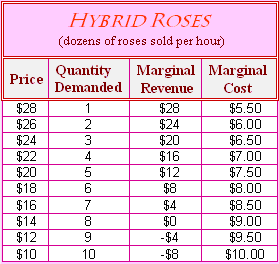Hybrid Roses is the merely florist in 60 miles of Presidio, Texas. When total fixed costs (for example, rent and utilities) are $9 per hour, that profit-maximizing monopolist will incur total costs of around: (w) $20 per hour. (x) $27 per hour. (y) $34 per hour. (z) $49.50 per hour.

Hey friends please give your opinion for the problem of Economics that is given above.